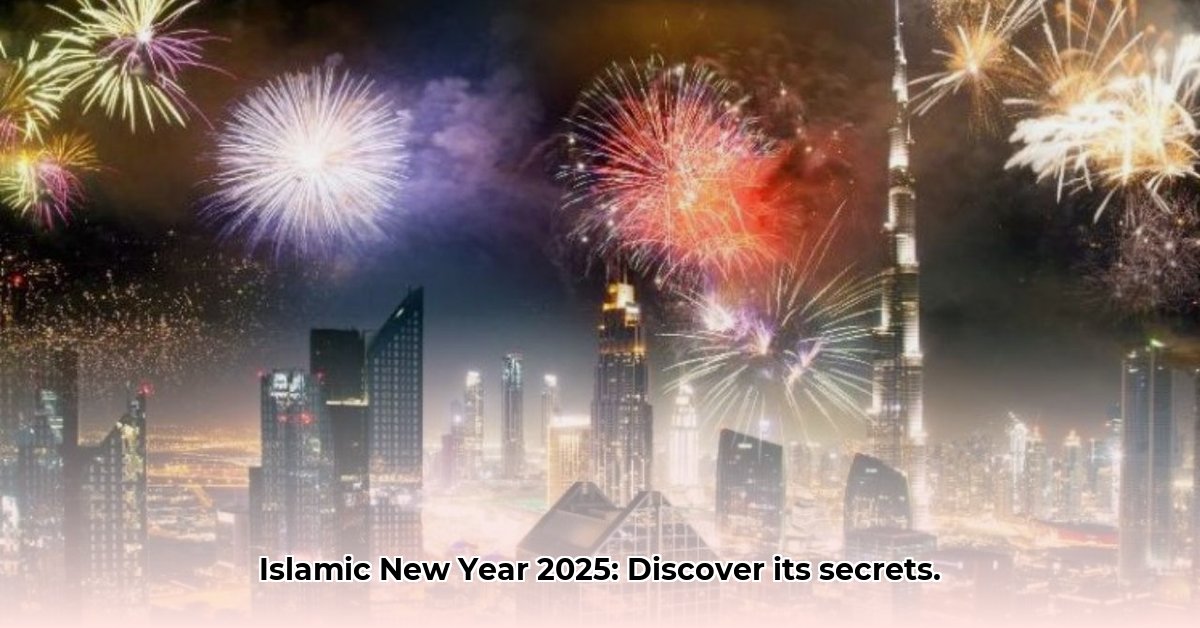
Celebrating the Islamic New Year: A Comprehensive Guide
Eish, South Africa! Ready to lekker understand the Islamic New Year (also known as Hijri New Year) in 2025? It's a special time for our Muslim neighbours and friends, and we're here to give you the full lowdown. This isn't just about dates – it’s about the history, the spiritual heart of it all, and the mooi traditions. We'll unpack everything, from the significance of Muharram (the first month of the Islamic calendar) to how communities celebrate this important occasion. Consider this your ultimate guide to joining in the celebrations with a deeper understanding of their meaning.
Muharram: More Than Just a New Beginning
Muharram, the first month of the Islamic calendar, isn't just any new year; it holds immense significance for Muslims globally. Think of it as a spiritual reset – a time for reflection on the past year, prayer, and recommitment to faith. Many see it as a period for serious introspection, setting new goals, and generally making a fresh start. It's a deeply meaningful time, imbued with profound spiritual weight. Did you know that many Muslims view this period as a time of increased spiritual awareness and a heightened focus on personal growth and faith?
What Happens During the Islamic New Year?
Many Muslims observe fasts during Muharram, particularly on Ashura, the tenth day. Ashura is a day of remembrance of significant historical events and an expression of devotion. Different interpretations exist regarding the precise significance of Ashura, and observances vary among different Islamic traditions. However, the central theme remains consistent: prayer, reflection on the past year, and a strong dedication to faith. Families gather for special meals, and communities may hold special prayer services. It’s a time of unity and strengthened community bonds. Do you know that the spirit of giving and charity is a significant aspect of the Islamic New Year celebrations?
A Tapestry of Diverse Celebrations
The way people celebrate the Islamic New Year varies greatly depending on their location and cultural background. Every culture and community adds its own unique flavour. From the food shared to the specific traditions upheld, it’s a remarkably diverse event. You’ll find family gatherings, special meals, and community prayers consistently, but it's the specific customs and traditions that add to this fascinating mosaic of faith and culture. It’s truly a vibrant display of both religious and cultural diversity.
Understanding the Lunar Calendar
The Islamic calendar is a lunar calendar, unlike our Gregorian calendar which is solar. This means it's based on the moon's cycles, not the sun's. That's why the dates shift each year. While initially different, this dynamic lunar system adds a unique element to the New Year celebrations. It's crucial to check reliable online sources for the precise dates each year, as they change according to the lunar cycle. Have you ever considered the symbolic meaning of the moon's cycles in relation to spiritual renewal?
Key Takeaways: Understanding the Islamic New Year
- The Islamic New Year marks the beginning of Muharram, the first month of the Islamic lunar calendar.
- The date varies annually due to the lunar calendar's dependence on moon sightings.
- It is a time of spiritual reflection, renewal, and community bonding, with diverse cultural expressions across different regions.
Calculating the Exact Date of the Islamic New Year
So, you want to know precisely when the Islamic New Year starts? It’s not as simple as checking a Gregorian calendar! The Islamic calendar is lunar, meaning its months follow the moon's phases. Therefore, the Islamic New Year doesn't have a fixed date.
The Lunar Cycle and Astronomical Calculations
The Islamic New Year, the beginning of Muharram, commences with the sighting of the new moon. This precise moment requires meticulous astronomical calculations, considering the moon's position relative to the Earth and sun. It's a delicate balance between observation and astronomical accuracy. This shows the fascinating interplay between faith and scientific precision in calculating this significant date. This isn’t simply about looking at the sky, but requires a deep understanding of celestial mechanics.
Utilizing Online Resources and Tools
While you could delve into complex astronomical computations, easier methods are available. Many websites and apps provide Islamic calendar conversion tools. These tools let you convert Gregorian dates to Islamic dates and vice versa. However, remember to cross-check information from multiple reliable sources. Several online tools provide accurate conversions but it's important to ensure the sources are credible.
Regional Variations in Moon Sighting
Another aspect to consider is regional variations in the Islamic New Year's date. This is primarily due to differing times of moon sightings. The visibility of the new moon can vary based on weather conditions and geographical location within regions. This again highlights the deep integration of astronomy and religious practice within the calculation of the New Year.
The Islamic New Year is more than just a date; it’s a period of immense spiritual and cultural significance. Understanding how its date is calculated gives a deeper appreciation for its rich history and traditions.